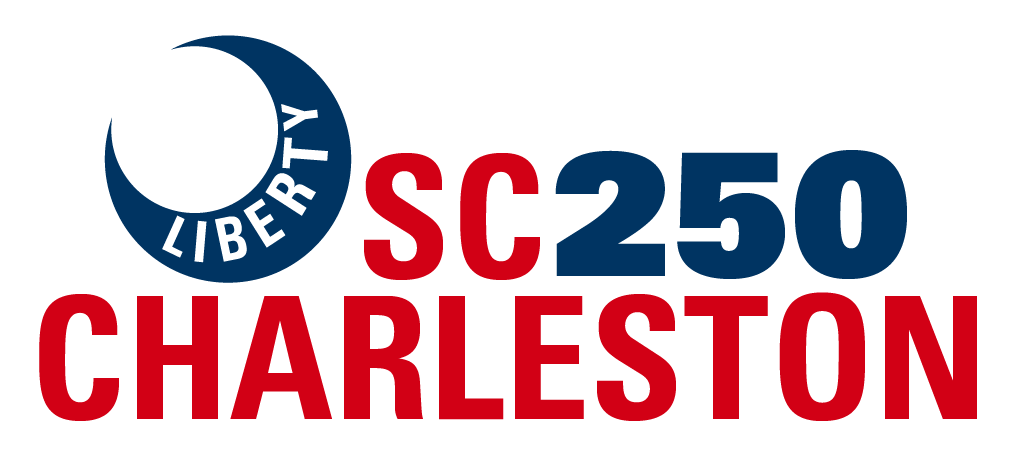While many eyes on both sides of the Atlantic were focused on Massachusetts, Charleston in 1775 was also a place of escalating tension and revolutionary crisis.
January 11: The first session of the South Carolina Provincial Congress convenes in Charleston*. Charles Pinckney is elected president. The South Carolina Provincial government becomes the Patriot’s shadow government. Francis Salvador, one of the delegates, is the first identified Jew to be elected to public office in the American colonies.
- South Carolina Historical Magazine: The South Carolina and Continental Associations: Prelude to Revolution by Christopher Gould
- Library of Congress: Francis Salvador, the First Jewish Member of a Legislative Assembly in American History
January 17: The South Carolina Provincial Congress resolves that “That it be recommended by this Congress, to all inhabitants of this colony, that they be diligently attentive in learning the use of arms; and that their officers be requested to train and exercise them at least once a fortnight.”
February 27: British salt, coal, and tiles aboard the merchant ship Charming Sally are dumped into Hog Creek. This is one of the first enforcements of the newly enacted import ban agreed to at the First Continental Congress in Philadelphia and later ratified in Charleston.
- South Carolina Historical Magazine: The South Carolina and Continental Associations: Prelude to Revolution by Christopher Gould.
March 4: The ship Katherine arrives in Charleston Harbor with a cargo of 300 Angolan slaves to sell in Charleston’s markets. Cited for violating Article 2 of the 1774 Continental Association banning the import of slaves, the Katherine is prevented from landing its cargo and sails on March 25 for the West Indies.
- National Archives: Continental Association, 20 October 1774
March 29: Denied permission to land furniture and horses brought from England, Charleston resident Robert Smyth sails back to London with his son. Smyth’s request to land his personal property roiled the Provincial Congress and local population.
- South Carolina Historical Magazine: The South Carolina and Continental Associations: Prelude to Revolution by Christopher Gould
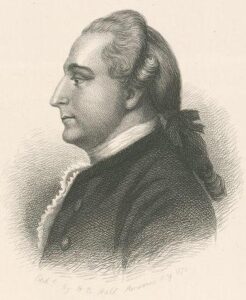
April 14: Charleston learns that King George III has declared the colonies to be in a state of rebellion and that Lord North is sending more troops to the colonies.
April 19: Patriots intercept and read the Royal mail recently arrived in Charleston. In the letters, the patriots learned of King George III’s intention to ensure that the rebellious colonists understood Parliament’s supremacy and to use military force as necessary. This news did much to squash the camp hoping for a peaceful reconciliation.
- Charleston Time Machine: Prelude to the Revolution and Stealing Lord Dartmouth’s Mail in April 1775
April 21: Arms & Powder Raids – empowered by the new Committee of Safety, patriots raid three arms and powder storage sites in and around Charleston. The purloined arms and gunpowder is stored at Gadsden’s Wharf.
- Charleston Time Machine: The Rebellion of South Carolina, April 21, 1775
May 9: Charleston learns the news of the April 19, 1775 Battle of Lexington and Concord.
- The New England Quarterly:“The Newspaper Coverage of Lexington and Concord.” by Frank Luther Mott
May 10: South Carolina’s delegates to the Second Continental Congress meet their counterparts in Philadelphia. Those present in 1775 include:
- Edward Rutledge (1775-1776)*
- John Rutledge (1775-1776)
- Thomas Lynch Sr. (1775-1776)
- Thomas Lynch, Jr. (1775-1776)* – traveled to Philadelphia to attend to his ill father. Elected to the Congress on March 23, 1776.
- Christopher Gadsden (1775-1776)
* Signed the Declaration of Independence
- Carolana.com: South Carolina Delegates to the Continental Congress 1774-1789
May 29: One of Charleston’s newspapers included a story that a ship was preparing to leave England carrying “seventy-eight thousand guns and bayonets, to be sent to America, to put into the hands of N[egroe]s, the Roman Catholics, the Indians and Canadians; and all the wicked means on earth used to subdue the colonies.” The story is false, but it does much to stir the passions of many South Carolinians.
June 1: The second session of South Carolina’s Provincial Congress begins. Henry Laurens is elected president of this session.
June 3: The South Carolina Provincial Congress forms an Association that pledges to use lethal force to defend American liberties against British oppression – to “unite ourselves, under every tie of religion and honour, and associate, as a band in her defence, against every foe.” Local Catholics are seen as one of those foes.
- Charleston Time Machine: Charleston Tar-and-Feathers Incident of 1775
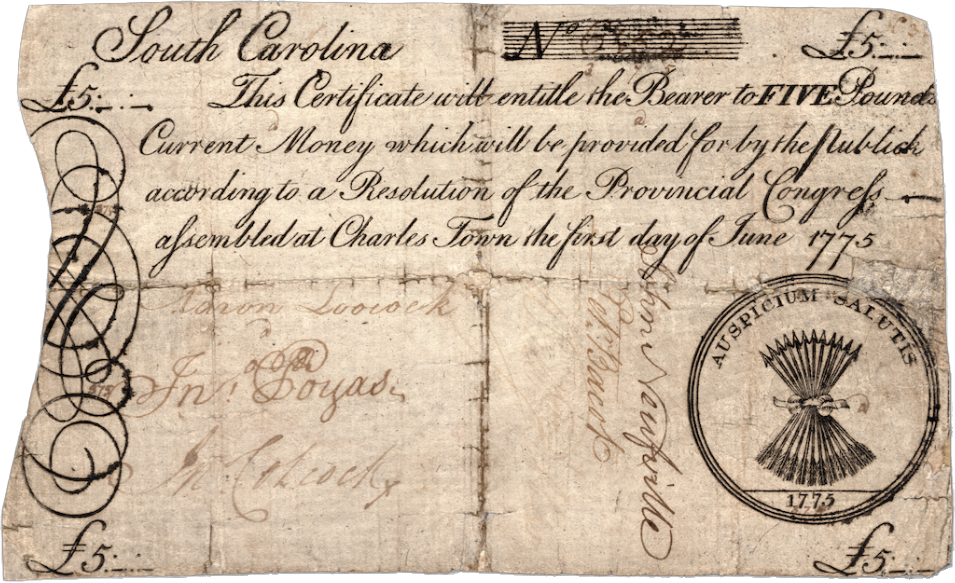
June 4: South Carolina’s Provincial Congress authorizes the issue of one million pounds in paper currency for military defense of the province, and appoints thirteen new members to the Council of Safety, with power to command all soldiers and to use all public money in the province.
- National Museum of American History: 50 Pounds, South Carolina Note, 1775
- Notre Dame: South Carolina Currency
June 6: South Carolina’s Provincial Congress resolves that two regiments of infantry (1st and 2nd South Carolina Regiments) and a third regiment of mounted riflemen (Ranger Regiment) be raised. The 2nd South Carolina and the 3rd South Carolina Ranger regiments will play a significant role in the June 28, 1776 Battle of Sullivan’s Island the following year.
- Carolana.com: SC First Regiment (Infantry)
- Carolana.com: SC Second Regiment (Infantry)
- The 2nd South Carolina Regiment: A Storied Legacy of Honor and Sacrifice
- Carolina.com: SC Third Regiment (Rangers)
June 8: Two Catholic loyalists – Laughlin Martin and James Dealey – are tried by a vigilante court near the South Carolina State House in Charleston. Convicted of supporting the arming of anti-Revolutionary forces , they are dragged outside and tarred and feathered.
- Charleston Time Machine: Charleston Tar-and-Feathers Incident of 1775
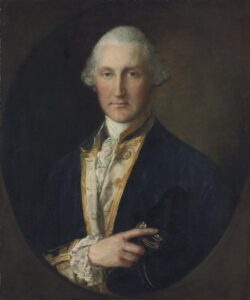
June 18: Royal Governor Lord William Campbell arrives in Charleston. He refused to recognize the Provincial Congress. He will dissolve the General Assembly in September and escape Charleston aboard a British warship.
- Carolana.com: Lord William Campbell
- Preservation Society of Charleston: Lord William Campbell
July: The South Carolina Navy came into existence in July 1775. The Provincial Congress’ Council of Safety authorized two captains to outfit a ship in Charleston Harbor which worked with naval forces from Georgia to seize gunpowder aboard British transport ships in the Savannah River. Some of this gunpowder will later be shipped to George Washington and his army ouside of Boston.
Other Ships Added to the South Carolina Navy in 1775:
- October 13: Defense (Captain Simon Tufts)
- November: Prosper
- December: Comet
- South Carolina Becomes a State: The Road from Colony to Independence, Terry Lipscomb
July 21: The South Carolina Council of Safety armed the sloop Commerce and commissioned Clement Lempriere as its captain. The Commerce sailed to St. Augustine and intercepted the Betsy, which was carrying 11,900 pounds of British gunpowder.
- The American Neptune: Defense, A Vessel of the Navy of South Carolina, Harold Mouzon
July 23: The Council of Safety resolves to send Chief Justice William Henry Drayton and Rev. William Tennant to the Backcountry to persuade those citizens to sign the “Continental Association” (export/import bans). They are escorted by Lt. Col. William Thomson.
August 7-8: Elections held in South Carolina for delegates to the next Provincial Congress which is to be held in Charleston in December 1775.
August 12: George Walker, a British gunner assigned to Fort Johnson, is seized by a mob for making an “insolent speech” against the Patriot cause. At 2 o’clock, Walker was tarred and feathered and carted through the city. It is reported that “there is hardly a street through which he was not paraded, nor a Tory House, where they did not halt…”
- The World of Thomas Jeremiah by William Ryan
August 18: Thomas Jeremiah, a free black harbor pilot and successful businessman, was hanged and burned in Charleston after being accused of plotting with the British to employ enslaved people against the patriots. Henry Laurens strongly advocated for Jeremiah’s conviction while Lord Campbell, the Royal governor, believed Jeremiah to be innocent.
- South Carolina Encyclopedia: Jeremiah, Thomas
- National Park Service: Thomas Jeremiah
- South Carolina Historical Society: Thomas Jeremiah is Sent to the Gallows
September 15: Patriots capture Fort Johnson – a strategic position guarding Charleston harbor.
- Carolana.com: 1775 Seizure of Fort Johnson
- University of South Carolina: Barnard Elliott’s account of the capture of Fort Johnson, 1775-9-14
September 18: Patriots attack and seize a small vessel that was to take supplies to two British warships anchored in Charleston harbor.
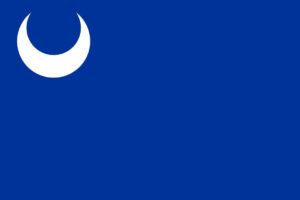
Late September/Early October: Col. William Moultrie creates the “Moultrie Flag” and flies it above Fort Johnson. In time, this flag, with its blue field and white crescent in its corner, will become the basis of South Carolina’s state flag.
- Charleston Time Machine: The State Flag of South Carolina: A Banner of Hope and Resilience
November 1775: After hearing rumors that Loyalist Col. Schofield was preparing to seize munitions in the Charleston area, the Council of Safety orders the establishment of a military depot at Dorchester.
November 1: South Carolina’s Provincial Congress’s second session convenes in Charleston. William Henry Drayton is elected president.
November 1: Loyalist Captain Robert Cunningham is charged by the Provincial Congress for failing to pledge allegiance to the patriot cause and is placed in jail. His brother, with other loyalists, will try to break him out of jail in February 1776.
November 9: The Royal Navy sloop Tamar seizes a ship in Charleston Harbor. The captured ship was carrying apples and cider bound for Georgia.
- Carolana.com: Rebellion Road
November 11-12: The naval Battle of Hog Island is fought in Charleston Harbor – the first military engagement of the Revolutionary War in South Carolina. The Defense, under the command of Captain Simon Tufts, was in the process of sinking four hulks in the Hog Island Channel when it was attacked by the Royal Navy’s Tamar and Cherokee. The two sides exchanged numerous broadsides at each other during the battle. William Henry Drayton was aboard the Defense during the battle, while Lord William Campbell, Royal Governor of South Carolina, was aboard the Tamar.
November 13: The 4th South Carolina Regiment (South Carolina Artillery Regiment) is authorized by the South Carolina Provincial Congress. Artillerists from the 4th regiment would play a key role in the June 28, 1776 Battle of Sullivan’s Island.
- South Carolina Historical Society: 4th South Carolina Regiment Order Book
November 16: The South Carolina Provincial Congress elects new Council of Safety members.
November 18-21: Battle of Ninety-Six. William Henry Drayton helped organize the Patriot forces that arrived.
- South Carolina Historical Society: The First Battle of Ninety-Six
December 6: Royal Navy warship Scorpion captures two Patriot ships at the mouth of Charlestown harbor. The Hetty had arrived from Jamaica and was carrying a carg0 of rum and sugar. The Thomas and Stafford, arrived from St. Kitts, was carrying a sizeable sum of money, rum, and sugar.
December 6: Royal Governor Campbell orders Loyalists and escaped slaves on Sullivan’s Island to raid the plantation of John Ashe at Haddrell’s Point. They are looking for food and supplies.
December 19: 54 men from John Allston’s Raccoon Company, disguise themselves as Indians and raid the fugitive slave camp on Sullivan’s Island. The raid kills 3 or 4 of the runaways and captures another 11, including three sailors from the British warship Cherokee. The nighttime raid was ordered by Henry Laurens, chairman of the Committee of Safety.
- Museum of the American Revolution: Epic Journeys of Freedom
- The World of Thomas Jeremiah by William Ryan
* In 1775, Charleston was spelled Charlestown or Charles Town
________
If you have questions about these historical events or have edits to propose, please write us at [email protected]
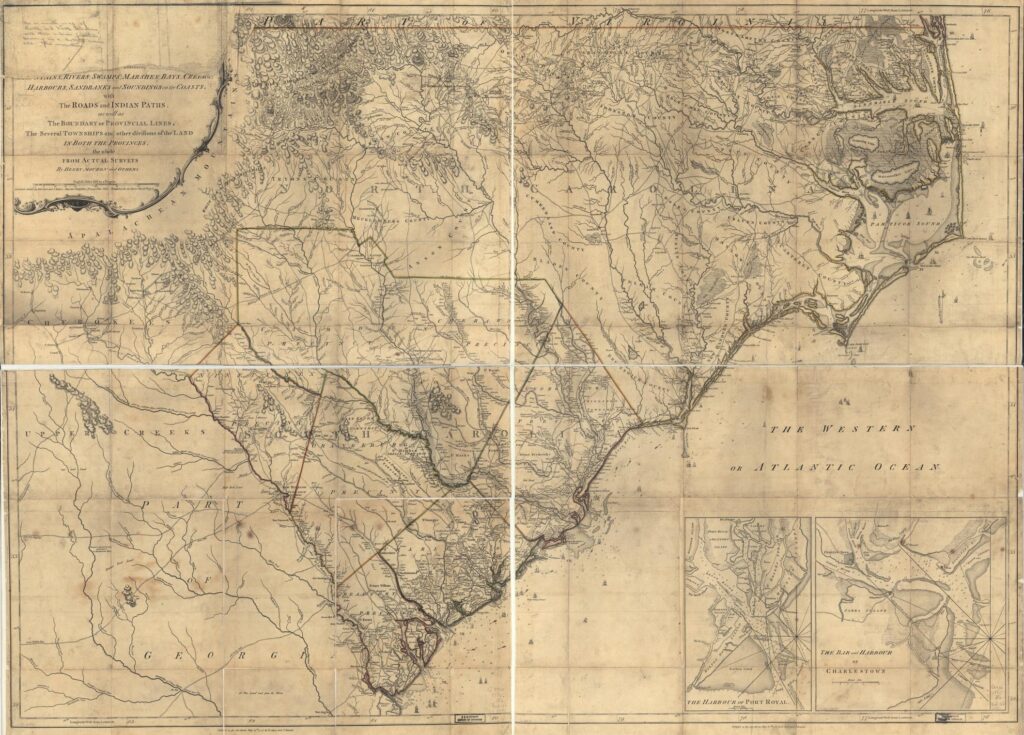 Map of North and South Carolina in 1775. London, Printed for Robt. Sayer and J: Bennett, 1775 (Library of Congress) see larger file
Map of North and South Carolina in 1775. London, Printed for Robt. Sayer and J: Bennett, 1775 (Library of Congress) see larger file
